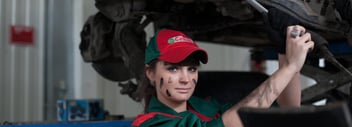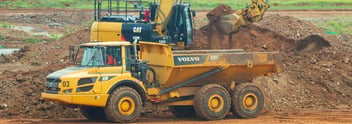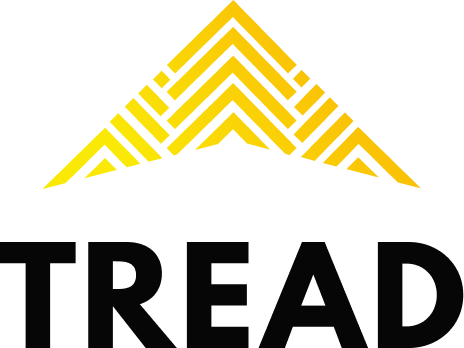Ultimate heavy equipment maintenance checklist
For any construction company to be profitable, their heavy machinery must be well maintained and in proper working order. A preventative maintenance program is the first step in accomplishing just that. If a maintenance schedule is not created or followed, the result could mean equipment failure, costly repairs, and long term problems.
The best way to implement a preventative maintenance plan is by performing daily and hourly maintenance checks. A heavy equipment maintenance checklist helps to keep fleet managers and heavy equipment operators accountable and extends the equipment life expectancy.
Heavy equipment maintenance checklist
This maintenance checklist has been broken down into checks that are required daily, versus checks that are required based on operating hours. Each piece of construction equipment will be used at different times and for different durations. That’s why it is best to schedule preventive maintenance based on hours in operation instead of by date.
Cloud-based construction fleet management software allows you to view important data about your fleet and drivers all from your phone, tablet or computer. Request a demo of Tread’s software today.
Daily pre-operation checks:
Before firing up the equipment, operators are required to perform a visual inspection and log it into a pre-operational log book before signing off and beginning their shift. This includes a variety of hands-on and visual inspections before, during, and after operating the heavy equipment. Operators should note any issues as soon as they are noticed so they can be addressed in a timely manner.
Pre-start checks (walk around)
Before you start the heavy equipment, perform these checks:
- Parking: Is the piece of equipment parked in a safe space?
- Hazards: Are there any tripping hazards? Are there any overhead hazards?
- Damaged/worn/loose parts: Inspect the overall condition.
- Leaks: Look under the equipment for any wet spots.
- Fluid analysis: Check engine oil fluid levels, power steering fluid levels, windshield washer fluid.
- Undercarriage: Look for worn or missing bogies or rollers, track tension, and overall condition on excavators.
- Check tires: Look for low or sagging tires, cuts to cord depth, damage, and general wear.
- Valve stems: Are caps present and securely screwed?
- Steering: Check for excessive play.
- Belts: Check for cracks, fraying, or splits.
- Hoses: Check for pinched, cracked, or loose hoses.
- Suspension system: Does the equipment bounce or vibrate when it’s in motion? Listen for any irregular noises when going over bumps or turning the wheel.
- Battery: If accessible, inspect cables, clamps, and connections. Are any loose? Is there any corrosion?
- Cab condition: Check glass, mirrors, wiper blades, horn, and seat belts.
Warm-up checks
Perform these checks after the equipment has been running for five to 10 minutes:
- Air filter system: Check for warnings. Replace or clean the filter if necessary.
- Listen for unusual noises
- Dashboard gauges: Do they appear to be working and at safe, operating levels?
- Lights: Test the lights. Headlights, high beams, signal lights, brake lights, and backup lights.
- Hydraulic system: Test all hydraulic lines and systems. For example, with a dump truck, raise the dump body, or with an excavator, move the bucket, stick, and boom. Listen and watch for issues. Are there any leaks? Is everything functioning properly? Are there any irregular noises?
- Check fluid levels: Engine, steering tank, hydraulic oil, power terrain, engine coolant, and swing drives.
- Brakes: Test that the brakes work properly.
Daily operating checks
During operation, watch and listen for irregularities:
- Listen for unusual noises
- Monitor gauges
- Feel for excessive vibrations
- Watch for any equipment performance changes
Shutdown check
After every shift, take the following actions:
- Fill the fuel tank: Fill the tank all the way to full.
- Idle engine: Allow the vehicle to idle for five minutes before shutting down completely.
- Park the vehicle in a safe place: Engage the parking brake.
- Clean or wash vehicle: If a washing station is available.
Every 250 to 500 hours:
Around 250 to 500 hours, it is best practice to schedule a basic engine service. This involves a number of checks and actions:
- Perform oil changes
- Change oil filters
- Change engine air filters
- Change fuel filters
Oil change intervals will rely on the quality of oil and filter being used in each piece of equipment.
Every 1,000 to 1,200 hours
- Replace cabin air filters
- Replace coolant filter (if applicable)
- Inspect air dryer (if applicable)
Every 4,800 to 5,000 hours
- Change return filters: Applicable for heavy equipment like hydraulic excavators.
- Check hydraulic filters: Replace at 80%.
- Check hydraulic oils: Fill or change if necessary.
- Conduct transmission differentials service
- Check pins and bushing: How much play is in the joints? Are they worn out?
- Check radiator
- Change antifreeze, except when coolant is Extended Life Coolant (ELC).
- Check hydraulic tank
Cross-reference the equipment manual
While the checklist above will help with preventative maintenance and be a great addition to any maintenance plan, we recommend cross-referencing these checklist items and frequencies with the ones listed in the manual for each piece of heavy equipment.
Each machine will have its own manufacturer’s recommendations that operators and fleet managers should familiarize themselves with.
Schedule regular maintenance
Successful heavy equipment management requires a commitment to the maintenance schedule.
Buy-in from machine operators and sub-contractors is a huge asset when it comes to any preventive maintenance program, as they are the ones to carry out the daily checks. If they are properly recording complications, the fleet manager can schedule the proper maintenance on top of the required routine maintenance.
Know the equipment history & storing service records
Each piece of equipment should have a detailed record including maintenance history, repairs, and any major issues or incidents.
This type of information is useful when it comes to future maintenance or repairs and helps fleet managers be more effective. With an organized record of equipment history, they can schedule preventive maintenance more accurately, which helps minimize operating costs.
Download the heavy equipment maintenance checklist
We have included a downloadable PDF of this heavy equipment maintenance checklist for you to use!
Heavy Equipment Maintenance Checklist
Software to track heavy equipment maintenance
Tread.io is a fleet management software that collects valuable fleet and driver data, which can assist with preventive maintenance scheduling, dispatching, and management.
Accurate operating hours are recorded so preventive construction equipment maintenance can be better managed and scheduled. Operator behavior information like speeding and idle times are also collected and can be used to better schedule maintenance intervals and drivers. With no hardware installation required, business owners and fleet managers can access fleet and driver data from their desktop, tablet, or smartphone.
In addition, our truck dispatch management software allows construction materials to be moved faster and at a lower operating cost. Fewer miles and faster cycle times mean less maintenance and pricey repair costs.
Request a demo to learn how Tread can be a part of your construction equipment maintenance strategy.
Read On

Construction Equipment Maintenance: Why It Matters
Owning and operating a construction company is not without its challenges, the biggest of which is...

Effective Construction Equipment Management Guide
Selecting the right equipment for a construction project is crucial when it comes to budget,...

Construction equipment management to reduce downtime
How much do downtime delays cost your company? If you use heavy construction equipment, unplanned...

